The 1924 Mercury dime’s value ranges from $2.75 for circulated coins to over $1,850 for pristine uncirculated examples. Philadelphia (no mint mark) versions start at $2.75 circulated, reaching $1,850 uncirculated. Both Denver (“D”) and San Francisco (“S”) mint marks are slightly more valuable at $3.50 circulated and $110 uncirculated. No major mint errors exist for 1924 dimes; “no mint mark” errors are rare and typically found in other years like the 1968 Roosevelt dime series, making them extremely valuable collector’s items.
That old dime hiding in your grandmother’s jewelry box could be worth far more than ten cents. The 1924 Mercury dime represents a fascinating chapter in American numismatic history, with values ranging from pocket change to serious investment territory. Whether you’ve inherited a coin collection or stumbled upon an old dime, understanding what makes these century-old pieces valuable can transform a curiosity into a profitable discovery.
Understanding the 1924 Mercury Dime Design
The 1924 dime features Adolph Weinman’s iconic Mercury design, though it actually depicts Lady Liberty wearing a winged Phrygian cap symbolizing freedom of thought. This design debuted in 1916 and continued through 1945, making it one of America’s most beloved coin series.
The obverse showcases Liberty’s profile facing left, with “LIBERTY” along the rim and “IN GOD WE TRUST” to the left of her neck. The reverse displays a fasces (a bundle of rods with an axe) wrapped in an olive branch, representing American strength and peace. The denomination “ONE DIME” appears at the bottom with “UNITED STATES OF AMERICA” and “E PLURIBUS UNUM” completing the design.
Each 1924 dime measures 17.9 millimeters in diameter and weighs 2.5 grams, composed of 90 percent silver and 10 percent copper. This silver content alone provides inherent value, with current melt values hovering around $1.80 based on silver market prices, establishing the absolute minimum worth for any 1924 dime regardless of condition.
Production Numbers and Mint Mark Locations
The United States Mint produced 1924 dimes at three facilities, each leaving its identifying mark on the coins. Philadelphia, as the main mint, struck 24,010,000 dimes bearing no mint mark. Denver produced 6,810,000 pieces marked with a “D,” while San Francisco contributed 7,120,000 dimes stamped with an “S.”
Finding the mint mark requires examining the reverse side carefully. Look at the lower left area, just to the left of the fasces near the bottom of the coin. Philadelphia coins display no mark in this location, while Denver and San Francisco pieces show their respective letters clearly stamped in the field.
These production figures make the Philadelphia version most common, though all three mints produced sufficient quantities that circulated examples remain accessible to collectors today. The Denver and San Francisco issues command slight premiums due to their lower mintage numbers, particularly in higher grades where survival rates become more significant.
Current Market Values by Grade and Mint Mark
The condition or grade of your 1924 dime dramatically impacts its value. Professional grading services like NGC and PCGS use the Sheldon Scale, ranging from Poor-1 to Perfect Mint State-70, to assess coins objectively.
1924 Philadelphia (No Mint Mark) Values:
| Grade | Value |
|---|---|
| Good-4 | $2.75 |
| Fine-12 | $3.25 |
| Extremely Fine-40 | $8.50 |
| About Uncirculated-50 | $18.00 |
| Mint State-60 | $35.00 |
| Mint State-63 | $55.00 |
| Mint State-65 | $185.00 |
| Mint State-67 | $1,850.00 |
1924-D Denver Values:
| Grade | Value |
|---|---|
| Good-4 | $3.50 |
| Fine-12 | $4.25 |
| Extremely Fine-40 | $12.00 |
| About Uncirculated-50 | $28.00 |
| Mint State-60 | $48.00 |
| Mint State-63 | $75.00 |
| Mint State-65 | $245.00 |
1924-S San Francisco Values:
| Grade | Value |
|---|---|
| Good-4 | $3.50 |
| Fine-12 | $4.50 |
| Extremely Fine-40 | $14.00 |
| About Uncirculated-50 | $32.00 |
| Mint State-60 | $52.00 |
| Mint State-63 | $85.00 |
| Mint State-65 | $265.00 |
According to NGC’s population reports, Mint State-65 and higher grades remain scarce for all three mint marks. A 1924 Philadelphia dime graded MS-67 sold through Heritage Auctions in 2023 for $1,920, while a 1924-S in MS-66 Full Bands condition achieved $3,120 at Stack’s Bowers in 2022. The “Full Bands” designation refers to complete separation of the horizontal bands on the fasces, a detail that significantly increases value in uncirculated grades.
Error Varieties and What Not to Expect
Unlike some Mercury dime years that produced famous error varieties, the 1924 issue remains relatively error-free in terms of major collectible mistakes. No documented “no mint mark” errors exist for 1924-D or 1924-S coins, as these coins were properly marked during production.
The confusion around “no mint mark errors” often stems from misunderstanding Philadelphia’s standard practice. Philadelphia coins never received mint marks during this period, so finding a 1924 dime without a mint mark simply indicates Philadelphia production, not an error condition.
Minor varieties do exist for dedicated variety collectors. These include die cracks, die chips, and subtle repunched mint marks, but none command the premium prices associated with major errors like doubled dies or off-center strikes. Some 1924 dimes show slight variations in the positioning of date numerals or mint marks due to multiple die marriages, but these bring modest premiums of 10 to 25 percent above standard values.
The famous “no-S” error that collectors often reference occurred much later with 1968 Roosevelt proof dimes, where San Francisco accidentally produced proof sets without the “S” mint mark. These 1968 no-S proofs sell for $15,000 to $25,000, but this error type simply doesn’t apply to the 1924 Mercury series.
Grading Your 1924 Dime Accurately
Understanding how professionals grade coins helps you assess what you own. Good-4 grade shows heavy wear with Liberty’s details mostly worn smooth, though the date and mintage remain visible. Fine-12 exhibits moderate wear with major design elements visible but lacking fine details. The diagonal bands on the fasces begin showing separation.
Extremely Fine-40 specimens display light wear on high points, with Liberty’s hair showing most detail intact and fasces bands clearly separated. About Uncirculated-50 coins retain most original mint luster with only slight friction on the highest points of the design.
Mint State coins show no wear from circulation. MS-60 displays bagmarks and contact marks from the minting process but no circulation wear. MS-63 shows fewer marks with decent eye appeal. MS-65 exhibits minimal marks visible only under magnification, with strong luster and attractive surfaces. MS-67 represents near-perfection with full original luster and virtually mark-free surfaces.
The “Full Bands” designation applies to Mint State Mercury dimes where the horizontal bands on the fasces show complete separation across all sections. This detail significantly increases value, sometimes doubling or tripling prices in grades MS-63 and above. Examining your coin under magnification helps determine if this premium designation applies.
Market Trends and Investment Potential
The 1924 Mercury dime market has shown steady appreciation over the past decade. Generic circulated examples have risen with silver prices, maintaining premiums above melt value due to collector demand. Uncirculated specimens in MS-63 to MS-65 grades have appreciated 35 to 50 percent since 2015, according to tracking data from major auction houses.
High-grade examples, particularly those graded MS-66 or higher with Full Bands designation, remain strong investments. Only 168 1924 Philadelphia dimes have achieved MS-67 grades through NGC as of 2024, with just 14 receiving the Full Bands designation at this level. Scarcity at these premium grades ensures continued demand from registry set collectors competing for finest-known examples.
The key for collectors lies in the MS-63 to MS-65 range, where coins balance affordability with collectibility. A 1924-D or 1924-S in MS-64 provides solid eye appeal and completion for Mercury dime type sets without requiring thousand-dollar investments. These middle-grade uncirculated pieces have shown consistent 6 to 8 percent annual appreciation, outpacing many traditional investments.
Where to Buy and Sell 1924 Dimes
Professional coin dealers offer the most reliable avenue for purchasing authenticated 1924 dimes. Major dealers like Heritage Auctions, Stack’s Bowers, Great Collections, and APMEX maintain extensive inventories with coins certified by NGC or PCGS. Third-party grading ensures authenticity and provides standardized condition assessment.
Online marketplaces like eBay offer broader selection but require caution. Stick with sellers maintaining 99 percent or higher feedback ratings with substantial transaction histories. Always insist on professionally graded coins for purchases exceeding $50, as counterfeit Mercury dimes exist, particularly for higher-grade specimens.
Local coin shops provide immediate transactions without shipping concerns, though selection may be limited. Establishing relationships with reputable local dealers offers advantages when selling, as they can provide immediate payment rather than waiting for auction cycles to complete.
When selling valuable 1924 dimes, consider professional auction houses for specimens grading MS-65 or higher. Heritage Auctions and Stack’s Bowers reach thousands of serious collectors willing to pay premium prices for quality material. Their typical 15 to 20 percent seller’s fees are offset by achieving stronger prices through competitive bidding.
Building Your Mercury Dime Collection
Starting a 1924 dime collection begins with acquiring one example from each mint. A circulated set representing all three mints costs approximately $10 to $15, making it an accessible entry point. This approach provides variety without substantial investment while teaching you to identify mint marks and evaluate condition.
Advancing collectors focus on upgrading condition, perhaps targeting About Uncirculated or low Mint State examples. A complete three-coin set in AU-50 condition requires roughly $75 to $80, representing coins with minimal wear and strong remaining detail.
Serious collectors pursue Full Bands examples in premium Mint State grades, building registry sets competing for highest-ranked collections. This advanced collecting requires significant investment but offers the satisfaction of owning truly exceptional numismatic material.
Consider specializing in varieties for deeper collecting satisfaction. Minor repunched mint marks, die marriages, and toning variations provide collecting challenges beyond simple date-and-mintmark completion. These varieties often cost little more than standard examples but offer enhanced intellectual engagement with the series.
Authentication and Preservation Tips
Protecting your 1924 dimes requires proper storage. Never clean coins, as cleaning destroys original surfaces and dramatically reduces value. Even gentle cleaning eliminates the natural patina collectors prize, converting uncirculated coins into damaged pieces worth only melt value.
Store coins in holders designed for numismatic preservation. Mylar flips, cardboard 2x2s with Mylar windows, or certified grading slabs provide protection from environmental damage. Avoid PVC-containing holders, as polyvinyl chloride causes green deposits that permanently damage coin surfaces.
Handle coins by their edges only, preventing fingerprint oils from contacting surfaces. These oils create spots and discoloration over time, reducing both aesthetic appeal and market value. For valuable specimens, consider wearing cotton gloves during handling.
Temperature and humidity control matters for long-term preservation. Store coins in climate-controlled environments, avoiding basements, attics, or locations subject to temperature fluctuations. Silica gel packets in storage containers help control humidity, preventing toning acceleration or environmental damage.
Making Smart Purchasing Decisions Today
Focus on buying quality rather than quantity when investing in 1924 dimes. A single MS-65 example provides more satisfaction and investment potential than dozens of worn pieces worth little above silver value. Set clear goals for your collection, whether completing date sets, pursuing high grades, or accumulating silver content.
Research current market prices before purchasing. The PCGS Price Guide and NGC Coin Explorer provide free price information updated monthly, reflecting actual market transactions. Compare asking prices against these guides, typically aiming to pay within 10 to 15 percent of guide values for fairly priced coins.
Membership in the American Numismatic Association provides educational resources, authentication services, and access to knowledgeable collectors. Their summer conventions offer opportunities to examine hundreds of coins in person, developing the eye necessary for making confident purchases. Annual membership costs $46 for adults, representing excellent value for serious collectors.
Your 1924 dime journey starts with education and proceeds through careful acquisition of quality material. Whether you’re examining a recent inheritance or contemplating your first numismatic purchase, these century-old silver dimes offer tangible connections to American history alongside genuine investment potential. Start by identifying what you already own, research current values, and consider how these attractive coins might enhance your collection or portfolio.
You may be interested:
- 1859 Indian Head Penny Coin Value Complete Errors List And No Mint Mark Worth Guide For Collectors
- 1911 V Nickel Coin Value Guide Complete Errors List And No Mint Mark Worth Today
- 1902 Dime Coin Value Complete Errors List With O S And No Mint Mark Worth Guide
- 1788 Quarter Coin Value Complete Guide Errors List And D S P Mint Mark Worth Revealed
- 1776 To 1976 Bicentennial Half Dollar Coin Value Complete Errors List And What Your D S And No Mint Mark Coins Are Actually Worth
- 1990 Penny Coin Value Errors List How D S And No Mint Mark Pennies Are Worth Thousands Of Dollars

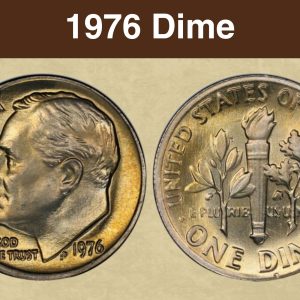
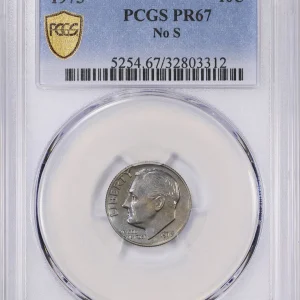
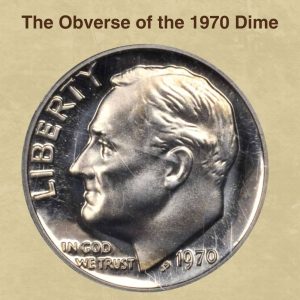
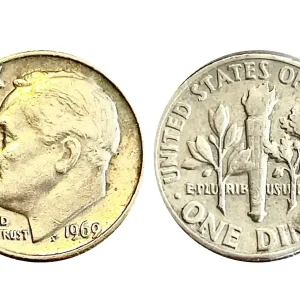
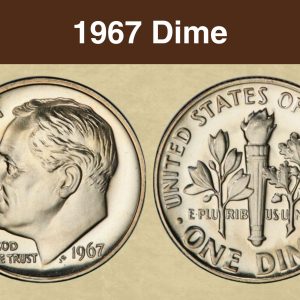
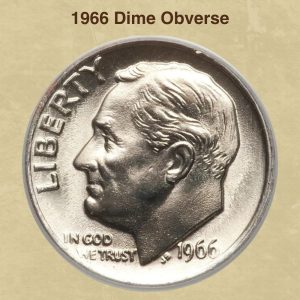
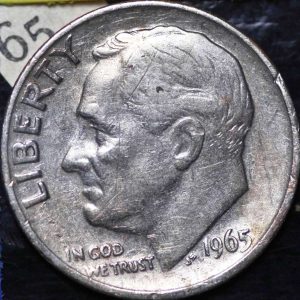
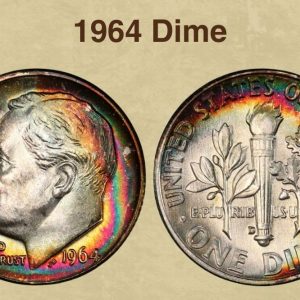
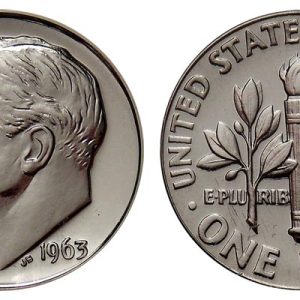
How much is a 1924 S Mercury dime worth?
A 1924-S Mercury dime’s value ranges from approximately $3.75 for a circulated coin to over $65,000 for a rare, high-grade specimen with full bands. The final price depends on the coin’s condition, with a key factor being the clarity of the bands on the bottom of the “E” and “F” in “FIVE CENTS”.
What are the rarest Mercury dimes?
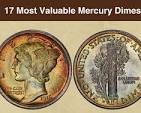 The rarest Mercury dime is the `1916-D` , with a mintage of only 264,000, making it the key date of the series.Other rare dates include the 1921 and 1921-D Mercury dimes, as well as the 1942/41 overdate variety, which is highly sought after by collectors.[[1]](https://www.rarecoinwholesalers.com/mercury-dimes-38#:~:te…
Where is the mint mark on a 1924 Mercury dime?
The reverse of the dime shows a fasces, a Roman symbol representing the power of law and government. It is surrounded by an olive branch, symbolizing peace. The mint mark in located on the reverse, while the artist’s initials can be found on the obverse.
What year is the $2000000 dime?
1894-S Barber dime. The 1894-S Barber dime is a dime produced in the United States Barber coinage. It is one of the rarest and most highly prized United States coins for collectors, along with the 1804 dollar and the 1913 Liberty Head nickel.